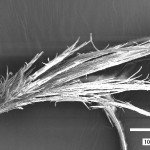Hair breakage is not an uncommon thing to see on a daily basis, but there are different types and causes. The common types and their causes are covered below:
1.Idiopathic Trichoclasia (Gk-Thrix-Hair, Klasia-Breakage)
As the name suggests this type of hair breakage arises spontaneously or from an obscure unknown cause (idiopathic).
This hair condition is not classified to any particular age or nationality.The cause is usually attributed to harsh brushing or scratching of scalp.
2.Monilethrix (Latin-Monile-Necklace, GK-Thrix-Hair).
This hair breakage condition is also known as “beaded hairs” hence the name Monilethrix, because the hair can resemble beads on a necklace.
The hair is characterised by beaded hair fragile hair. This can be a lifelong disease which can spontaneously improve after puberty or during pregnancy.
This hair condition is often seen in infancy. It is not more prevalent in any sex or nationality.
This condition is due to a mutation in human hair keratin gene.
Observations:
• The hair is fragile with varying degrees of breaking and alopecia
• The hair breaks to 0.5-2.5 cm and appears to be burnt 1.
• Usually occurs on scalp hair but can occasionally be seen in hair on other parts of the body such as the eyelashes, eyebrows, auxiliary and limb hairs.
• Lanugo hair appears normal after birth but is replaced after a few months with moniliform hair which is fragile, dry and lustless
Treatment
There is currently no treatment for this hair condition, although retinoids, acitretin and minoxidil have shown limited and variable success. To minimise hair breakage, individuals with this hair condition should avoid hair trauma and chemical processing of the hair.
3.Trichokryptomania
This is a self induced hair condition, in which the individual breaks of his or her hair. This condition is usually seen in neurotic patients hence the ‘mania’ part of word.
4.Trichoptilosis
This condition is commonly known as ‘split ends’ (splitting of the hair shaft).
Below list the common causes of Trichoptiliosis:
• Over use of chemical treatments (relaxers, perming lotions, hair dyes)
• Excessive styling products especially products with high levels of alcohol (alcohol has the tendency to dry the hair out making it more susceptible to splitting).
• Heat damage (hairdryers, tong, flat irons etc)
• Improper detangling tools
• Improper detangling techniques
• Over washing
Treatment
Regular trims help to prevent split ends and subsequent breakage.
5. Trichorrhexis Nodosa (Gk-Orrhexis-rupture, breaking, Nodosa-Nodes)

the picture shows Trichorrhexis Nodosa-fraying is seen at the site of a nodule or node.
This hair condition is diagnosed when small white dots are seen along the hair shaft.The hair will break very easily at these nodes.
Trichorrhexis Nodosa can either be caused by trauma (such as excessive brushing, back combing, heat styling or chemical procedures) or it can be congenital.
Treatment.
Treatment is aimed around minimising trauma to the hair from both chemical and physical avenues.


